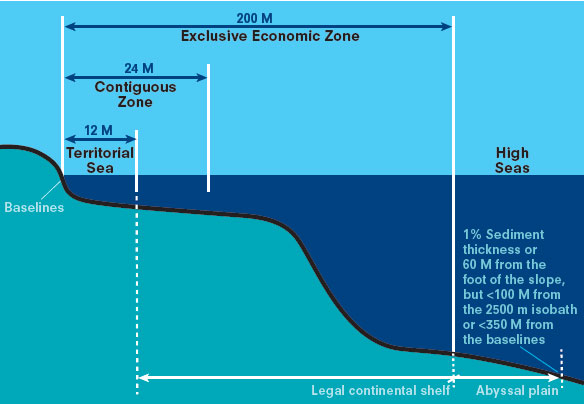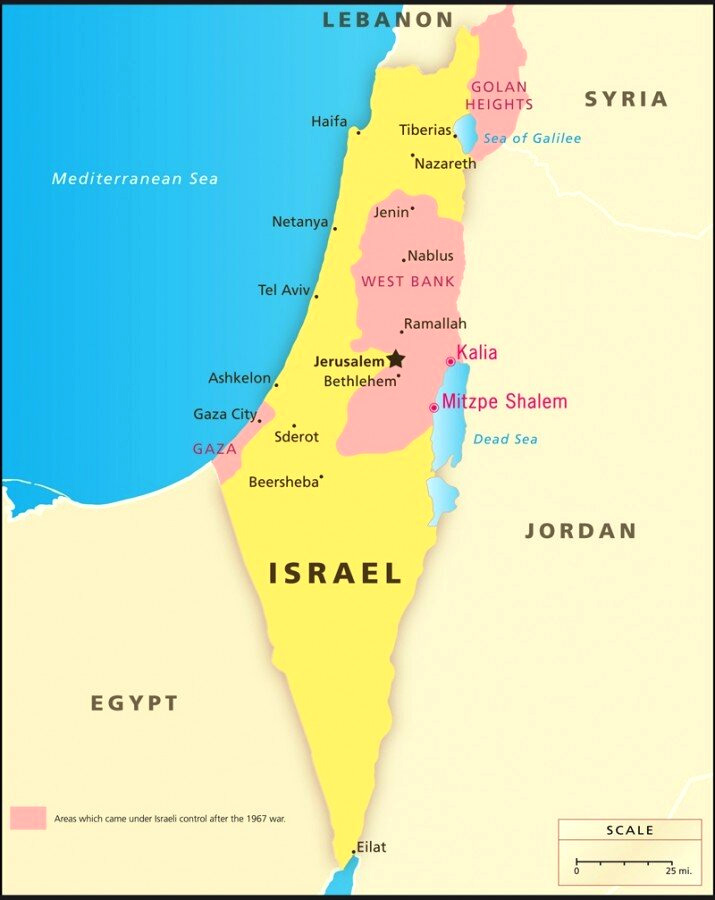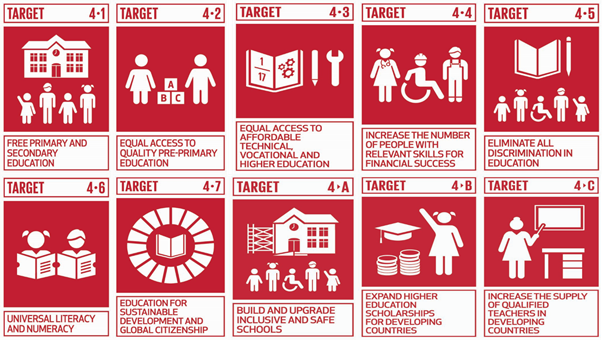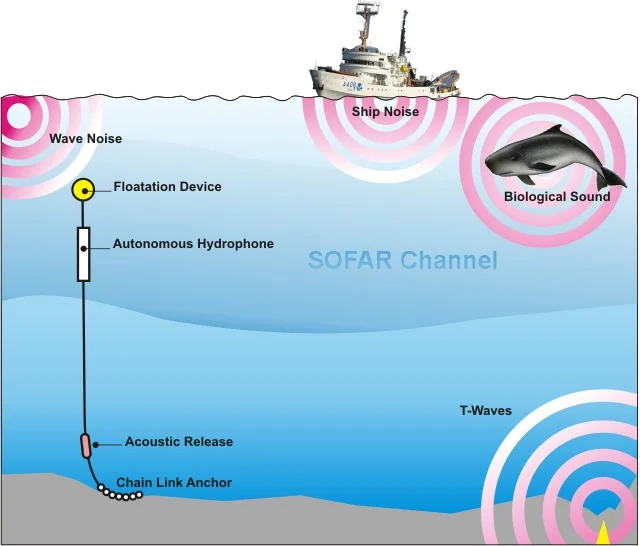International Relations
US Patrol in India’s EEZ
Why in News
Recently, India protested against the US decision to conduct a patrol in the Indian Exclusive Economic Zone (EEZ) in the western Indian Ocean, rejecting the US’ claim that India’s domestic maritime law was in violation of international law.
Key Points
- Issue:
- About:
- The US Seventh Fleet announced that one of its warships, USS John Paul Jones (DDG 53), had carried out a Freedom of Navigation Operation (FONOP) west of Lakshadweep Islands, inside India’s EEZ, without requesting India’s prior consent, consistent with international law.
- Seventh Fleet:
- It is the largest of the US Navy’s forward deployed fleets.
- India had a close encounter with the 7th fleet during the 1971 war with Pakistan.
- Freedom of Navigation Operations (FONOP):
- It involves passages conducted by the US Navy through waters claimed by coastal nations as their exclusive territory.
- It reaffirms the US policy of exercising and asserting its navigation and overflight rights and freedoms around the world.
- This communicates that the US does not accept the excessive maritime claims of other nations, and thus prevents those claims from becoming accepted in international law.
- This is the first time the US Navy has issued a public statement giving details of the operation.
- About:
- US’ Stand:
- India requires prior consent for military exercises or maneuvers in its EEZ or continental shelf.
- India’s claim to EEZ is inconsistent with international law (United Nations Convention on the Law of the Sea 1982).
- FONOP upheld the rights, freedoms, and lawful uses of the sea recognized in international law by challenging India’s excessive maritime claims.
- India’s Protest:
- India’s stated position on the United Nations Convention on the Law of the Sea (UNCLOS) is that the Convention does not authorise other States to carry out in the EEZ and on the continental shelf, military exercises or manoeuvres, in particular those involving the use of weapons or explosives, without the consent of the coastal state.
- It is only when it is “military manoeuvres” in Indian EEZ that nations need to seek India’s permission and not if they are simply transiting through.
- The term military manoeuvres is not defined anywhere.
- Seventh Fleet to carry out FON missions in Indian EEZ in violation of Indian domestic law (Territorial Waters, Continental Shelf, Exclusive Economic Zone and Other Maritime Zones Act, 1976).
United Nations Convention on the Law of the Sea 1982
- About:
- The UNCLOS is an international treaty that provides a regulatory framework for the use of the world’s seas and oceans.
- It lays down a comprehensive regime of law and order in the world's oceans and seas establishing rules governing all uses of the oceans and their resources.
- It enshrines the notion that all problems of ocean space are closely interrelated and need to be addressed as a whole.
- Ratification:
- The Convention was opened for signature in December 1982 in Montego Bay, Jamaica.
- The Convention entered into force in accordance with its article 308 in November 1994, 12 months after the date of deposit of the sixtieth instrument of ratification or accession.
- Today, it is the globally recognized regime dealing with all matters relating to the law of the sea.
- The convention has been ratified by 168 parties, which includes 167 states (164 United Nations (UN) member states plus the UN Observer state Palestine, as well as the Cook Islands and Niue) and the European Union. An additional 14 UN member states have signed, but not ratified the convention.
- While India ratified UN Law of the Seas in 1995, the US has failed to do it so far.
- Exclusive Economic Zone
- According to UNCLOS, the EEZ is an area beyond and adjacent to the territorial sea, subject to the specific legal regime under which the rights and jurisdiction of the coastal State and the rights and freedoms of other States are governed by the relevant provisions of this Convention.
- It is defined as generally extending 200 nautical miles from shore, within which the coastal state has the right to explore and exploit, and the responsibility to conserve and manage, both living and non-living resources.
Indian Law
- As per India’s Territorial Waters, Continental Shelf, Exclusive Economic Zone and Other Maritime Zones Act, 1976:
- The EEZ of India is an area beyond and adjacent to the territorial waters, and the limit of such zone is two hundred nautical miles from the baseline.
- India’s limit of the territorial waters is the line every point of which is at a distance of twelve nautical miles from the nearest point of the appropriate baseline.
- All foreign ships (other than warships including sub-marines and other underwater vehicles) shall enjoy the right of innocent passage through the territorial waters.
- Innocent passage: It is the passage that is not prejudicial to the peace, good order or security of India.
International Relations
India-Seychelles
Why in News
Recently, a virtual meet was held between the Prime Minister of India and the President of Seychelles.
Key Points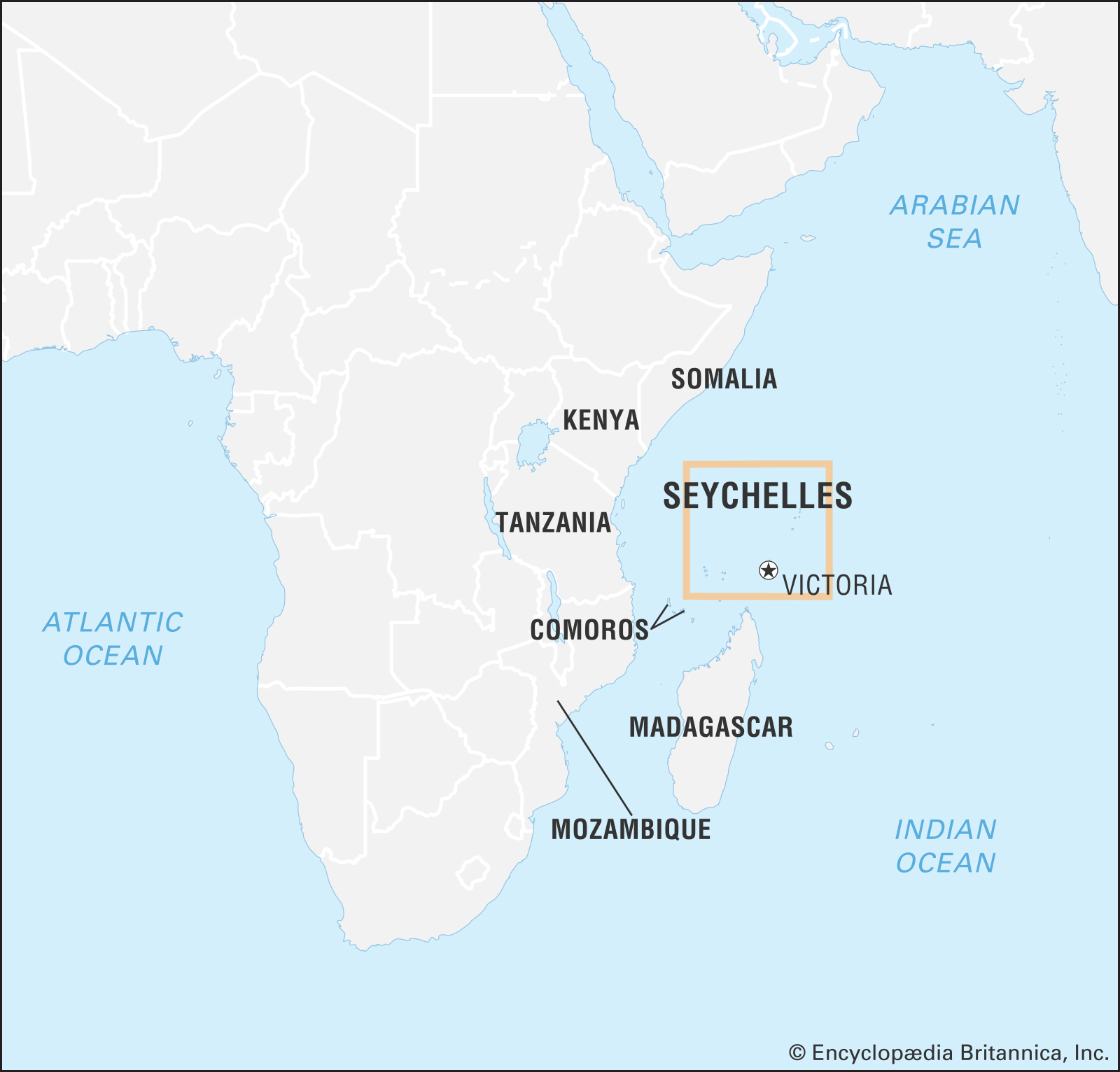
- Events at the Meet:
- Joint Inauguration:
- Inaugurated the new magistrates’ court building in Mahé constructed with a USD 3.5-million, a 1 MW solar power plant built at a cost of USD3.4 million, and 10 community development projects in Seychelles.
- All the projects were built by the help of India.
- India has so far taken up 29 small people-oriented development projects in Seychelles, while the 1MW solar project was built in addition to installing solar systems at 146 government buildings and domestic households.
- The solar plant will meet the electricity needs of around 400 houses round the year.
- Inaugurated the new magistrates’ court building in Mahé constructed with a USD 3.5-million, a 1 MW solar power plant built at a cost of USD3.4 million, and 10 community development projects in Seychelles.
- Fast Patrol Vehicle:
- India handed over a fast patrol vessel (PS Zoroaster) to the island nation.
- The 48.9-metre patrol boat was built by Garden Reach Shipbuilders and Engineering (under the administrative control of the Ministry of Defence) at a cost of Rs. 100 crore and has a top speed of 35 knots and an endurance of 1,500 nautical miles.
- The vessel will be used for multi-purpose operations, such as patrolling, anti-smuggling and anti-poaching operations, and search and rescue.
- India gifted similar vessels to the Seychelles in 2005, 2014 and 2016.
- Joint Inauguration:
- India’s Stand:
- Seychelles is central to India’s vision of Security and Growth for All in the Region (SAGAR).
- India is honoured to be a partner of Seychelles in the development of its security capabilities and in meeting its infrastructural and developmental needs.
- Seychelles Stand:
- India is a reliable and trusted partner.
- India’s precious donation of 50,000 doses of Covid-19 vaccines had helped Seychelles in moving towards the goals of achieving 70% herd immunity by the end of April 2021 and opening up the economy.
- Seychelles was the first country to receive the Covid vaccine from India.
India-Seychelles Relation
- Background:
- Diplomatic ties were established with Seychelles after its independence in 1976.
- When Seychelles attained freedom, a contingent from the Indian Naval Ship, INS Nilgiri, took part in the Independence Day celebrations.
- Since then the tradition of Indian military participation at the Seychelles National Day celebrations has continued till date.
- An Indian Mission was established in 1979 in Victoria, Seychelles with the High Commissioner based in Dar-es-Salaam (Tanzania) and concurrently accredited to Seychelles.
- The first resident High Commissioner was appointed in 1987, while Seychelles opened its resident mission in New Delhi in early 2008.
- Economic Relation:
- India exported goods worth USD 84.49 million and imported goods worth USD 5.27 million from Seychelles during the financial year 2018-19.
- Tax Information Exchange Agreement (TIEA) between India and Seychelles was signed in August 2015. Seychelles is also keen to sign the Double Tax Avoidance Agreement (DTAA).
- Energy & Environment:
- Blue Economy Protocol between India and Seychelles was signed in August 2015.
- Recently, India has been accepted as an observer of the Indian Ocean Commission, of which Seychelles is a member.
- With the ratification of the International Solar Alliance (ISA) Framework Agreement in September 2017, Seychelles has officially become one of the Founding Members of ISA.
- ISA is an Indian Initiative.
- Blue Economy Protocol between India and Seychelles was signed in August 2015.
- Cultural Relations:
- With a significant presence of Indian Diaspora in Seychelles, cultural contacts between the two countries have been primarily community-driven with support from the two governments.
- At the initiative of prominent Person of Indian Origin (PIO) associations in Seychelles, several Indian cultural troupes regularly visit Seychelles for performance.
- In June 2018, Cultural Exchange Programme (CEP) was signed with Seychelles to mark the friendship and goodwill between the two countries.
- Indian Community:
- The number of PIOs with Seychelles citizenship is estimated to be around 10,000 (or 11% of the population), which is significant in a country with a total population of 96,000 (April 2019).
- There are about 10,000 Indian citizens holding Gainful Employment Permits, who are mostly workers in the construction sector, shop assistants and a few professionals.
- Defence:
- India and Seychelles have an elaborate architecture of defence and security cooperation that has deepened over the years with the growing piracy menace and other economic offences in the strategic Indian Ocean region.
- India gifted and installed six coastal surveillance radar systems in Seychelles in 2015 enabling better coastal security for Seychelles.
- The Seychelles government has leased the Assumption Island to the Indian Navy to build an overseas base of operations there.
- Developing infrastructure on Assumption Island in Seychelles is a key piece in India’s proactive maritime strategy as it counters China’s moves in the Indian Ocean region.
- Developing its infrastructure is being regarded as a “strategic asset” in India’s arsenal.
SAGAR
- Security and Growth for All in the Region (SAGAR) was launched in 2015. It is India’s strategic vision for the Indian Ocean Region (IOR).
- Through SAGAR, India seeks to deepen economic and security cooperation with its maritime neighbours and assist in building their maritime security capabilities.
- Further, India seeks to safeguard its national interests and ensure Indian Ocean region to become inclusive, collaborative and respect international law.
- The key relevance of SAGAR emerges when seen in conjunction with India’s other policies impacting the maritime domain like Act East Policy, Project Sagarmala, Project Mausam, India as ‘net security provider’, focus on Blue Economy etc.
Way Forward
- Seychelles has been a strategic destination for several major powers with vested interests in the region, however India’s image and visibility in Seychelles is very high as compared to others.
- The geo-strategic importance of Seychelles’s location remains undiminished in contemporary times, and will become enhanced and China is fighting to get an upper hand which India must not allow.
- There is also a need to strengthen shared efforts of both the countries to combat drug trafficking, IUU (Illegal, unreported and unregulated) fishing, piracy and climate change while protecting the ocean ecosystem.
International Relations
US Restores Aid to Palestinians
Why in News
The United States, in a significant reversal to the earlier policy, has announced the restoration of at least USD 235 million in financial assistance to the Palestinians.
- The US administration had already announced USD 15 million in coronavirus relief to the Palestinians.
Key Points
- Financial Aid:
- The financial aid includes USD 75 million economic help for the West Bank & Gaza, USD 10 million for ‘peacebuilding’ programmes of the US Agency for International Development (USAID) and USD 150 million in humanitarian assistance to the UN Relief and Works Agency (UNRWA).
- The UNRWA funds would include educational assistance for at least 5,00,000 Palestinian children living in West Asia.
- The Trump administration (former administration) had almost ended all funding to the organisation in 2018.
- The UN welcomed the move, hoping it would attract more funds to the body. There were a number of countries that had greatly reduced or halted contributions to UNRWA after the US stopped the aid.
- The Prime Minister of Palestine welcomed the move and called it a new political path that meets the rights and aspirations of the Palestinian people based on international law and UN resolutions.
- However, Israel, which has accused UNRWA of anti-Semitism (hostility to, prejudice, or discrimination against Jews), objected to the funding plans.
- The financial aid includes USD 75 million economic help for the West Bank & Gaza, USD 10 million for ‘peacebuilding’ programmes of the US Agency for International Development (USAID) and USD 150 million in humanitarian assistance to the UN Relief and Works Agency (UNRWA).
- Israel - Palestine Issues:
- The decades-long conflict between Israelis and Palestinians is rooted in competing claims to the Holy Land, and includes disputes over borders, Jerusalem, security, and Palestinian refugees.
- The Israel-Palestine Conflict can be traced back to 1917.
- Holy Land is a Middle Eastern region with great religious and historical significance to Christians, Jews, and Muslims.
- Mideast War, 1967 was a major turning point. It is also known as the six-day war or Third Arab-Israeli war.
- Israel captured the West Bank, east Jerusalem and Gaza Strip in the war. In the decades since, Israel has built settlements in the West Bank and east Jerusalem that now house a million Israelis.
- The decades-long conflict between Israelis and Palestinians is rooted in competing claims to the Holy Land, and includes disputes over borders, Jerusalem, security, and Palestinian refugees.
- US Recent Policy:
- US President Donald Trump’s decision in 2017, to relocate the US Embassy to Jerusalem, was criticized for being heavily tilted towards Israel.
- Mideast Plan or Middle East Peace Plan: It was unveiled by the then US government in January, 2020.
- Under it, the Palestinians would have a limited statehood contingent on a list of stringent requirements while Israel would annex some 30% of the West Bank.
- The Palestinians rejected the plan and threatened to withdraw from key provisions of the Oslo Peace Accords, which are a series of agreements between Israel and the Palestinians signed in the 1990s.
- Present US President Joe Biden has reaffirmed the United States’ commitment to a two-state solution.
- India’s Stand:
- India recognised Israel in 1950 but it is also the first non-Arab country to recognise Palestine Liberation Organisation (PLO) as the sole representative of the Palestinian.
- India is also one of the first countries to recognise the statehood of Palestine in 1988.
- In 2014, India favored UNHRC’s resolution to probe Israel’s human rights violations in Gaza. Despite supporting the probe, India abstained from voting against Israel in UNHRC in 2015.
- As a part of Link West Policy, India has de-hyphenated its relationship with Israel and Palestine in 2018 to treat both the countries mutually independent and exclusive.
- In June 2019, India voted in favor of a decision introduced by Israel in the UN Economic and Social Council (ECOSOC) that objected to granting consultative status to a Palestinian non-governmental organization.
- So far India has tried to maintain the image of its historical moral supporter for Palestinian self-determination, and at the same time to engage in the military, economic, and other strategic relations with Israel.
- India recognised Israel in 1950 but it is also the first non-Arab country to recognise Palestine Liberation Organisation (PLO) as the sole representative of the Palestinian.
The Territorial Puzzle
- West Bank: The West Bank is sandwiched between Israel and Jordan. One of its major cities is Ramallah, the de facto administrative capital of Palestine.
- Israel took control of it in the 1967 war and has over the years established settlements there.
- Gaza: The Gaza Strip located between Israel and Egypt. Israel occupied the strip after 1967, but relinquished control of Gaza City and day-to-day administration in most of the territory during the Oslo peace process.
- In 2005, Israel unilaterally removed Jewish settlements from the territory, though it continues to control international access to it.
- Golan Heights: The Golan Heights is a strategic plateau that Israel captured from Syria in the 1967 war. Israel effectively annexed the territory in 1981.
- The US has officially recognized Jerusalem and Golan Heights as part of Israel.
- Fatah: Founded by the late Yasir Arafat in the 1950s, Fatah is the largest Palestinian political faction.
- Unlike Hamas, Fatah is a secular movement, has nominally recognized Israel, and has actively participated in the peace process.
- Hamas: Hamas is regarded as a terrorist organization by the US government. In 2006, Hamas won the Palestinian Authority's legislative elections.
- It ejected Fatah from Gaza in 2007, splitting the Palestinian movement geographically, as well.
Way Forward
- Balanced Approach Towards the Israel-Palestine: The world at large needs to come together for a peaceful solution but the reluctance of the Israeli government and other involved parties have aggravated the issue more.
- Thus a balanced approach would help to maintain favorable relations with Arab countries as well as Israel.
- Abraham Accords, a Positive Step: The recent normalization agreements between Israel and the UAE, Bahrain, Sudan, and Morocco, known as the Abraham Accords, are the steps in the right direction.
- All regional powers should envisage peace between the two countries on line of Abraham Accords.
International Relations
Meeting of Education Ministers of E9 Countries
Why in News
Recently, a consultation meeting of Education Ministers of E9 countries was held.
- The meeting was held on the theme ‘E9 initiative: Scaling up digital learning to accelerate progress towards SDG4’.
Key Points
- Scaling up Digital Learning to Accelerate Progress towards SDG4 (Concept):
- The United Nations (UN) is spearheading a global initiative on digital learning and skills for all, targeting marginalized children and youth and aiming to close the digital divide and drive rapid change in education systems.
- This initiative focuses on three of the five priorities of the 2020 Global Education Meeting (GEM) Declaration: supporting teachers; investing in skills; and narrowing the digital divide.
- E9 countries offer a starting gate to accelerate progress on digital learning and skills in the immediate term and ultimately on the SDG4 agenda in the longer term.
- E9 Countries:
- E9 Partnership was first established in 1993, formed to achieve the goals of UNESCO's Education For All (EFA).
- A group of E9 countries (Bangladesh, Brazil, China, Egypt, India, Indonesia, Mexico, Nigeria, and Pakistan) aims at strengthening political will and collective effort to ensure quality education and lifelong learning opportunities for all.
- E9 Partnership is working for the achievement of SDG4 – Education 2030.
- Education For All (EFA):
- An international initiative, first launched at the World Conference on Education for All by UNESCO, UNDP, UNFPA, UNICEF and the World Bank in Thailand in 1990.
- Participants endorsed an 'expanded vision of learning' and pledged to universalize primary education and massively reduce illiteracy by the end of the decade.
- Ten years later, with many countries far from having reached this goal, a broad coalition of national governments, civil society groups, and development agencies met again in Dakar, Senegal, and affirmed the commitment to achieving EFA by the year 2015.
- They identified six key education goals which aim to meet the learning needs of all children, youth and adults by 2015 (e.g. the Dakar Framework for Action).
2020 Global Education Meeting Declaration
- As part of the Decade of Action to accelerate progress on SDG4 and in response to Covid-19, the 2020 GEM Declaration identified five priorities for urgent action:
- Education financing;
- Safe school reopening;
- Supporting teachers as frontline workers;
- Investment in skills; and
- Narrowing the digital divide.
- The Covid-19 crisis revealed the weakness and unpreparedness of the current education systems worldwide, prompting the deployment of digital learning during mass school closures across almost all countries.
SDG4
- To bring sustainable development in the mainstream, the United Nations (UN) member states, in 2015, adopted the 2030 Agenda for Sustainable Development and Sustainable Development Goals (SDGs).
- There are 17 goals and 169 specific targets to be achieved by 2030.
- SDGs are not legally binding.
- SDG4 is to ensure inclusive and equitable quality education and promote lifelong learning opportunities for all.
Science & Technology
Ocean Acoustic During Covid-19
Why in News
There was reduced noise pollution on the surface of earth during the Covid-19 pandemic owing to lockdowns and stop of economic activities (like international trade).
- In the underwater world, too, anthrophony (human-made sounds) reduced substantially for long months.
Key Points
- Noise in the Ocean:
- The three broad components of oceanic acoustics are:
- Geophony: Sounds created by non-biological natural events like earthquakes, waves and bubbling.
- Biophony: Sounds created by the ocean’s living creatures.
- Anthrophony: Sounds created by human beings (a large portion of which is shipping noise).
- According to ‘the Soundscape of the Anthropocene Ocean report’ published in Science Journal in 2021, geophony and biophony dominated the soundscape of oceans before the industrial era.
- However, now, anthrophony interferes with and alters these natural components.
- The three broad components of oceanic acoustics are:
- Noise Level in Modern Times:
- The oceans of the current geological era (Anthropocene era - when human-made disruptions largely influence the environment) are noisier than the pre-industrial times.
- During the first few days of the pandemic, ocean sound monitors at several places recorded a decibel (dB) drop.
- The hydrophones at the Endeavour node of Canada’s Neptune Ocean Observatory showed an average decrease of 1.5 dB in year-over-year mean weekly noise power spectral density at 100 hertz.
- Impact of Anthrophony:
- In the short term anthrophony masks the auditory signal processing by marine animals, weakening their ability to forage for food, escape a predator or attract a mate.
- In the long run, it can thin out the population of some underwater species.
- The International Quiet Ocean Experiment (IQOE):
- It is an international scientific program to promote research, observations, and modelling to improve understanding of ocean soundscapes and effects of sound on marine organisms.
- It started in 2015 and will go on till the end of 2025. The IQOE team has gathered large quantities of data during the Covid-19 pandemic.
- IQOE is developing methods to make ocean acoustic data more comparable. These data will be compiled into a global dataset to establish trends in ocean sound and look for effects of the Covid-19 pandemic on ocean sound.
- The IQOE has identified a network of over 200 non-military hydrophones (underwater microphones) in oceans across the world.
- Most of the hydrophones in the network of this project are along the shores of the USA and Canada. Now the presence is increasing in several other parts of the world, especially Europe.
- These hydrophones (that pick up even faraway low-frequency signals) have recorded sounds from whales and other marine animals, as well as those emanated by human activities.
Hydrophone
- Just as a microphone collects sound in the air, a hydrophone detects acoustic signals under the water.
- Most hydrophones are based on a special property of certain ceramics that produces a small electrical current when subjected to changes in underwater pressure.
- When submerged in the ocean, a ceramic hydrophone produces small-voltage signals over a wide range of frequencies as it is exposed to underwater sounds emanating from any direction.
- By amplifying and recording these electrical signals, hydrophones measure ocean sounds with great precision.
Science & Technology
B.1.617: Indian Double Mutant Strain
Why in News
The ‘double mutant’ virus that is having a bearing on the spread of the pandemic in India, has been formally classified as B.1.617.
- Mutation is an alteration in the genetic material (the genome) of a cell of a living organism or of a virus that is more or less permanent and that can be transmitted to the cell’s or the virus’s descendants.
Key Points
- Double Mutant (B.1.617):
- Earlier Genome sequencing of a section of virus samples by the Indian SARS-CoV-2 Consortium on Genomics (INSACOG), revealed the presence of two mutations, E484Q and L452R.
- Though these mutations have individually been found in several countries, the presence of both these mutations together have been first found in coronavirus genomes from India.
- This double mutant from India has been scientifically named as B.1.167. However, it is yet to be classified as ‘Variant of Concern’.
- Till now only three global ‘Variants of Concern’ have been identified: the U.K. variant (B.1.1.7), the South African (B.1.351) and the Brazilian (P.1) lineage.
- Earlier Genome sequencing of a section of virus samples by the Indian SARS-CoV-2 Consortium on Genomics (INSACOG), revealed the presence of two mutations, E484Q and L452R.
- Spread of B.1.617: According to the INSACOG, sequencing a sample of genomes from coronavirus patients in India, B.1.617 was first detected in India in December, 2020.
- Today, nearly 70% of the genome sequences with the mutations characterising B.1.617 are from India.
- This is followed by the United Kingdom (23%), Singapore (2%) and Australia (1%).
Variant of Concern
- These are variants for which there is evidence of an increase in transmissibility, more severe disease (increased hospitalizations or deaths), significant reduction in neutralization by antibodies generated during previous infection or vaccination, reduced effectiveness of treatments or vaccines, or diagnostic detection failures.
- Issues Associated with Mutants:
- Mutant virus is associated with large spikes of Covid-19 cases in some countries.
- It enables viruses to become more infectious as well as evade antibodies.
- It has also been associated with a reduction in vaccine efficacy. International studies have shown reduced efficacy of vaccines particularly those by Pfizer, Moderna and Novavax to certain variants.
- However, the vaccines continue to be significantly protective in spite of this.
- Another Mutation:
- According to INSACOG, there is also a third significant mutation, P614R other than the two mutations (E484Q and L452R).
- All three concerning mutations are on the spike protein. The spike protein is the part of the virus that it uses to penetrate human cells.
- Virus' spike protein may increase the risks and allow the virus to escape the immune system.
- Resistant to T cells:
- L452R could even make the coronavirus resistant to T cells, that is the class of cells necessary to target and destroy virus-infected cells.
- T cells are different from antibodies that are useful in blocking coronavirus particles and preventing it from proliferating.
- L452R could even make the coronavirus resistant to T cells, that is the class of cells necessary to target and destroy virus-infected cells.
T Cells
- A type of white blood cell that is of key importance to the immune system and is at the core of adaptive immunity.
- It creates the body's immune response to specific pathogens.
- The T cells are like soldiers who search out and destroy the targeted invader.
Indian SARS-CoV-2 Consortium on Genomics
- Indian SARS-CoV-2 Consortium on Genomics (INSACOG) is a multi-laboratory, multi-agency, pan-India network to monitor genomic variations in the SARS-CoV-2.
- It helps in the understanding of how the virus spreads and evolves.
- Genomic surveillance can generate a rich source of information for tracking pathogen transmission and evolution on both national and international levels.

